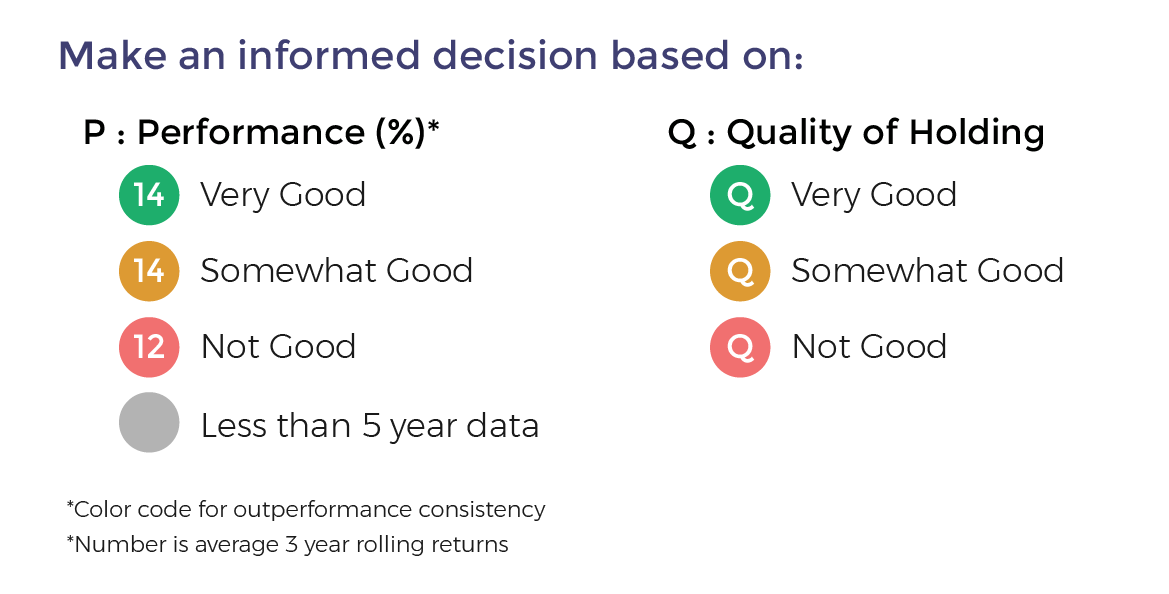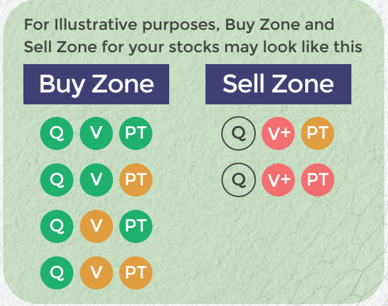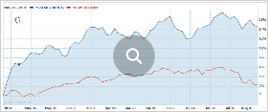Popular Vehicles and Services
- Popular Vehicles and Services is coming out with a 100% book building; initial public offering (IPO) of 2,08,49,614 shares of Rs 2 each in a price band Rs 280-295 per equity share.
- Not more than 50% of the issue will be allocated to Qualified Institutional Buyers (QIBs), including 5% to the mutual funds. Further, not less than 15% of the issue will be available for the non-institutional bidders and the remaining 35% for the retail investors.
- The issue will open for subscription on March 12, 2024 and will close on March 14, 2024.
- The shares will be listed on BSE as well as NSE.
- The face value of the share is Rs 2 and is priced 140 times of its face value on the lower side and 147.50 times on the higher side.
- Book running lead managers to the issue are ICICI Securities, Nuvama Wealth Management and Centrum Capital.
- Compliance Officer for the issue is Varun T.V.
Profile of the company
The company is a diversified automobile dealership in India in terms of revenue as of Fiscal 2023, having a fully integrated business model. The company caters to the complete life cycle of vehicle ownership, right from the sale of new vehicles, servicing and repairing vehicles, distributing spare parts and accessories, to facilitating sale and exchange of pre-owned vehicles, operating driving schools and facilitating the sale of third-party financial and insurance products. It categorises its automobile dealership business into three key segments, namely, (a) passenger vehicles including luxury vehicles, (b) commercial vehicles and (c) electric two-wheeler and three-wheeler vehicles.
The company operate (a) passenger vehicle dealerships covering economy, premium and luxury vehicles across its dealerships for the following OEMs: (i) Maruti Suzuki India (Maruti Suzuki) for both Arena and Nexa, through the Company, (ii) Honda Cars India (Honda) through its Subsidiary, VMPL, and (iii) Jaguar Land Rover India (JLR) through its Subsidiary, PAWL; (b) commercial vehicle dealerships of (i) Tata Motors (Tata Motors (Commercial)), through its Subsidiary, PMMIL and (ii) Daimler India Commercial Vehicles (BharatBenz), through its Subsidiary, PMPL; and (c) electric three-wheeler vehicle dealership of Piaggio Vehicles, including commercial and cargo vehicles (Piaggio), through its Subsidiary, KGPL and electric two-wheeler vehicle dealership of Ather Energy (Ather), through its Subsidiary, KCPL.
Proceed is being used for:
- Repayment and/or pre-payment, in full or part, of certain borrowings, availed by the company and certain of its Subsidiaries, namely, PAWL, PMMIL, KGPL, KCPL and PMPL.
- General corporate purposes.
Industry overview
The auto industry, a key contributor to the Indian economy, has grown by leaps and bounds over the years. In fact, its contribution to India’s GDP increased from 2.8% in fiscal 1993 to ~7.1% currently. The industry employs over 19 million people directly and indirectly, according to the Ministry of Information and Broadcasting report, 2023. India is one of the largest auto markets in the world, with annual domestic sales of over 20 million vehicles. Domestic sales reached a high of 27 million in fiscal 2019, backed by favourable macroeconomic growth, rising consumption, favourable rural demand, as well as healthy demand from end-use sectors. However, domestic sales fell 17.7% in fiscal 2020 amid slowdown in GDP growth as well as inventory correction for Bharat Stage-VI (BS-VI) upgradation. The Covid-19 pandemic also hit the automotive industry hard, and sales dropped 12% on an already low base of fiscal 2020 to 19.5 million in fiscal 2021. Resurgence of Covid cases in a much severe form hit the domestic market in fiscal 2022, exerting pressure on auto sales. Fiscal 2023 witnessed normalisation in market operations, reopening of schools/colleges/offices, improvement in macroeconomic scenario, easing out of supply issues, which helped the industry clock 20% growth on a low base of 3 years of consecutive contractions.
The domestic auto industry is dominated by the two-wheeler segment (more than 70% of the industry). Two-wheeler sales were on a growth trajectory until fiscal 2019, led by a robust rural economy supported by a good monsoon. Demand started slowing after fiscal 2019, because of falling private consumption along with a hike in prices. It slowed in fiscal 2020, due to tapering in economic growth as well as inventory adjustment owing to the BS-VI migration. The pandemic and the attendant nationwide and local lockdowns to contain it led to a steeper fall in domestic sales in fiscals 2021 and 2022 and, thus, contracting the share of two-wheelers in the overall auto sales. From this low base, the industry clocked healthy growth in fiscal 2023, led by pentup demand, improved macroeconomic scenario, revival of scooter demand with reopening of colleges and offices, as well as improvement in vehicle supply. Other segments such as PVs, CVs, and three-wheelers recorded a much faster revival last fiscal, exerting further pressure on the share of two-wheelers. PVs, the second largest contributor to domestic sales, witnessed growth till fiscal 2019, driven by expansion in the addressable market, increase in disposable income, development of infrastructure, and stable cost of vehicle ownership even as crude oil prices remained subdued. Lower private consumption, inventory adjustment on the back of new emission norms, and the liquidity crisis caused a significant drop in sales in fiscal 2020. The fall was exacerbated by the onset of the pandemic, resulting in a steep decline in demand in fiscal 2021.
Pros and strengths
Long standing presence in automobile industry and well-established relationships with leading OEMs: The Kuttukaran Group entered the automobile industry in 1953 with the commencement of the automobile spare parts and accessories business. The company has since forayed into the automobile dealership business by partnering with various leading OEMs. Maruti Suzuki and Honda represented approximately 41% and 2% of the passenger vehicles market share in India in Fiscal 2023, respectively. Tata Motors (Commercial) represented 40% of the commercial vehicles market share in India in Fiscal 2023. Piaggio and Ather represented 27% and 11% of electric three-wheeler and electric two-wheeler vehicles market share (retail sales) in India in Fiscal 2023, respectively. It set up the first Maruti Suzuki showroom in Trivandrum, Kerala in 1984 under the ‘Popular’ brand. It has since then strategically expanded its dealership network across the value-chain, from economy to premium to luxury vehicles, by partnering with Honda and JLR in 2008 and 2010, respectively, and subsequently partnering with Ather and Piaggio in 2021. It also entered the commercial vehicle dealership space in 1997 by partnering with Tata Motors (Commercial). It has further diversified its operations within the automobile dealership space by commencing its spare parts and accessories distribution business in 2005. Its long-term association with its OEMs and its strong business capabilities have resulted in it becoming a valued partner of these OEMs. Further, it has been able to form new dealership associations with commercial vehicle manufacturers such as BharatBenz.
Penetration in markets in which the company operates complemented by innovative marketing strategies: The company has a deep penetration in semi-urban and rural areas in the states it operates in, which is attributable to several innovative models adopted by it including the ‘hub and spoke’ model in respect of Maruti Suzuki and Tata Motors (Commercial) dealerships in Kerala, wherein its showrooms serve as a “hub” to its sales outlets and booking offices located in small towns and rural areas under the showroom. Its sales outlets and booking offices are typically operated out of smaller premises showcasing one or more vehicle models and are each managed by designated sales representatives with all other operational support being provided by its showrooms. Its showrooms, sales outlets and booking offices are present in almost all district of Kerala. It has 113 sales outlets and booking offices spread across 14 districts in Kerala, which significantly contributes towards increasing its brand recall among potential buyers across the state of Kerala. It has also introduced innovative marketing strategies to improve customer engagement and increase footfalls at each of its showrooms, sales outlets and booking offices and service stations. It has dedicated online portals through which customers can browse through its offerings, make bookings and book test drives. It organises regular customer meets, print advertisements and online contests that adds to its brand recall.
Fully integrated business model leading to business stability and higher margin: The company’s diversified automobile dealerships and a fully integrated business model contributes to its position as a leading automobile dealership player. In addition to benefiting from the inherent synergies arising out of its business verticals, its diversified income streams also contribute to higher profitability margins at its dealerships. Its PAT increased from Rs 324.55 million in Fiscal 2021 to Rs 640.74 million in Fiscal 2023. Further, it has marked an increase in its revenue from sales due to an increase in the sales of Nexa vehicles in Fiscal 2023. Increasing demand and sales of electric vehicles and a consistent growth in the sale of electric two-wheeler and three-wheeler vehicles, in India in Fiscal 2023, has also contributed significantly towards its growth. In Fiscal 2023, it has also entered into an arrangement with Kochi Metro Rail, a joint venture of the Government of India and the Government of Kerala, for the sale of electric three-wheeler vehicles for convenient transportation of their employees within the state. It offers fully integrated services through its authorised service centres that contribute to higher-margin revenues at each of its dealerships and helps mitigate the cyclicality that has historically impacted some elements of the automobile sector.
Proven ability to identify and capture inorganic as well as organic growth opportunities: As part of the company’s strategic plan to expand its business into other territories and states, it acquired the entire operations of a sizeable spare parts distributor in Karnataka, in Fiscal 2019, which helped it gain established business channels and a steady foothold in Karnataka. The business division acquired by it contributed to a total turnover of Rs 174.60 million and contributed to 12.02% of its total turnover and 7.26% of the total EBITDA of the Company during the six months period ended September 30, 2023. It took over eleven service centres and two showrooms from a dealer for Maruti Suzuki in Kerala in 2021. Further, as of July 31, 2023, it acquired 8 showrooms, 17 service centres and 3 sales outlets and booking offices for BharatBenz in Tamil Nadu and Maharashtra. Such strategic acquisitions were made considering the consequent geographic and dealership addition to its business operations. Post such acquisitions, it carries on the business under its own brand name. It has successfully been able to integrate the businesses acquired through such strategic acquisitions. It has also achieved organic growth by identifying underserved locations, including through consultation with OEMs, and by setting up new outlets in such areas. It has added 22 showrooms, 23 sales outlets and booking offices and 47 service stations across all its dealerships from Fiscal 2021 to Fiscal 2023.
Risks and concerns
Subject to significant influence of OEMs: The company operates the passenger vehicle dealerships of Maruti Suzuki, Honda and JLR, commercial vehicle dealership of Tata Motors (Commercial) and BharatBenz and electric two-wheeler and three-wheeler vehicle dealership of Ather and Piaggio, respectively. It has entered into dealership agreements with various OEMs in order to operate its dealerships and spare parts and accessories distributions business. Pursuant to the terms of the dealership agreements, the OEMs are able to exert influence over the day-to-day operations of its dealerships. For instance, the OEMs may unilaterally discontinue associations with vendors where it might have entered into long term contracts and made advance payments to such vendors for services. The OEMs are also entitled from time to time to prescribe the minimum requirements and specifications that each of its showrooms and service centres are required to adhere to which may require significant capital expenditure from time to time. For instance, it is subject to numerous operational requirements and restrictions relating to inventory levels, working capital levels, the sales process, marketing and branding, showroom and service facilities, signage, personnel, changes in management, technology implemented and monthly financial reporting, obtaining accreditation from the respective OEMs for the operation of service centres in the names of the OEMs, among other things.
Increasing competition among automotive dealerships: Automobile selling is a highly competitive business. The company’s competitors include private and public companies, some of whom may be larger with access to greater financial and marketing resources than it. Its competitors sell the same or similar makes of new and pre-owned vehicles that it offers in its markets at competitive prices. Further, it operates in the automobile dealership industry which has witnessed low PAT margins in the past. Its competitors may align themselves with services offered on the internet or invest in the development of their own internet capabilities. The company only sources customer queries online and it does not operate separately in the online market. In addition, its dealership agreements do not grant it the exclusive right to sell vehicles manufactured by the OEMs within a given geographic area. Its revenues or profitability could be materially adversely affected if any of the OEMs award dealerships to others in the same markets where it operates or if existing dealerships increase their market share in its markets. Its OEMs could in certain cases set up their own dealerships in the markets in which it operates. Further, its revenues may also be impacted on account of expansion of dealerships of competing brands of vehicles in the markets in which it operates.
Rely on independent contractors and third party customer service providers: The company utilizes independent contractors to execute certain ancillary services such as security services and housekeeping. Further, it also outsources some of its services to third party customer service providers. The timely execution of these services depends on the availability and skill of these contractors, as well as contingencies affecting them, including labour shortages due to various reasons including the COVID-19 pandemic and industrial action such as strikes and lockouts. If a contractor fails to perform its obligations satisfactorily or within the prescribed time periods with regard to payment to its labour, it shall be liable to perform their obligations and restore the due amount to labour which could result in reduced profits or, in some cases, significant penalties and losses which it may not be able to recover from the relevant independent contractor. Since it utilize third-party service providers, it cannot control all of the factors that might affect the quality and fulfilment of these services and products.
The company’s vehicle sales impacted by incentive, marketing, and other programs of the OEMs: The company’s OEMs establish various marketing and sales incentive programs from time to time, designed to increase consumer demand for their vehicles, particularly during Indian festivals or periods of excess supply and/or in a flat or declining new or pre-owned vehicle market. These programs impact its operations, particularly its sales margins of new vehicles. Since these programs are often not announced in advance, they can be difficult to plan for when budgeting for inventory. Furthermore, OEMs may modify or discontinue these marketing and incentive programs from time to time depending on various factors which could have a material adverse effect on its results of operations and cash flows. Its business is also dependent on customers’ perception of its OEM’s brands and marketing campaigns. Any negative public sentiment towards a particular OEM or its marketing campaigns could also have a bearing on its financial condition and results of operations.
Outlook
Incorporated in 1983, Popular Vehicles and Services is engaged in the business of automobile dealerships in India. The company provides complete services throughout the life cycle of vehicle ownership, including sales of new and preowned vehicles, servicing, spare parts distribution, driving schools, and third-party financial and insurance product sales. The company’s presence across vehicle categories, including passenger vehicles, commercial vehicles, and electric two-wheeler and three-wheeler vehicles, further diversifies its revenue streams. The experience, and diversity of its management team and its Promoters and the long-standing presence of the Kuttukaran Group in the automobile industry have enabled it to become valued partners of each of its OEMs giving it a distinct competitive advantage in the industry in which it operate. On the concern side, the company’s customers expect a high standard of customer service and product knowledge from its technicians and its store representatives. Further, modern vehicles are increasingly complex and require sophisticated equipment and specially trained technicians to perform certain services. Its ability to maintain low labour costs is subject to numerous external factors, including prevailing wage rates, as well as the impact of legislation or regulations governing labour relations and minimum wages.
The company is coming out with an IPO of 2,08,49,614 equity shares of face value of Rs 2 each. The issue has been offered in a price band of Rs 280-295 per equity share. The aggregate size of the offer is around Rs 583.78 crore to Rs 615.06 crore based on lower and upper price band respectively. On performance front, the company’s total income for FY 2023 was Rs 48,926.28 million, as compared to Rs 34,841.99 million for FY 2022, reflecting an increase of 40.42%, mainly owing to an increase in the volume of sale of new passenger vehicles and commercial vehicles and enhancement of revenue from sale of services. The company’s profit after tax increased by 90.31% to Rs 640.74 million for FY 2023 from Rs 336.69 million for FY 2022, reflecting enhanced revenues, cost efficiencies, improved productivity and increase in overall PBT. Meanwhile, the company intends to sustain and increase the growth of its services and repair vertical through a combination of measures including increasing the number of authorised service centres, focussing on customer retention, raising awareness about preventive maintenance amongst customers, selling vehicle service contracts in conjunction with vehicle sales and efficient management of parts inventory. It also intends to continue to strategically diversify its portfolio, and will thus, continue to evaluate prospects of introducing additional brands to its existing portfolio to meet changing customer preferences.































